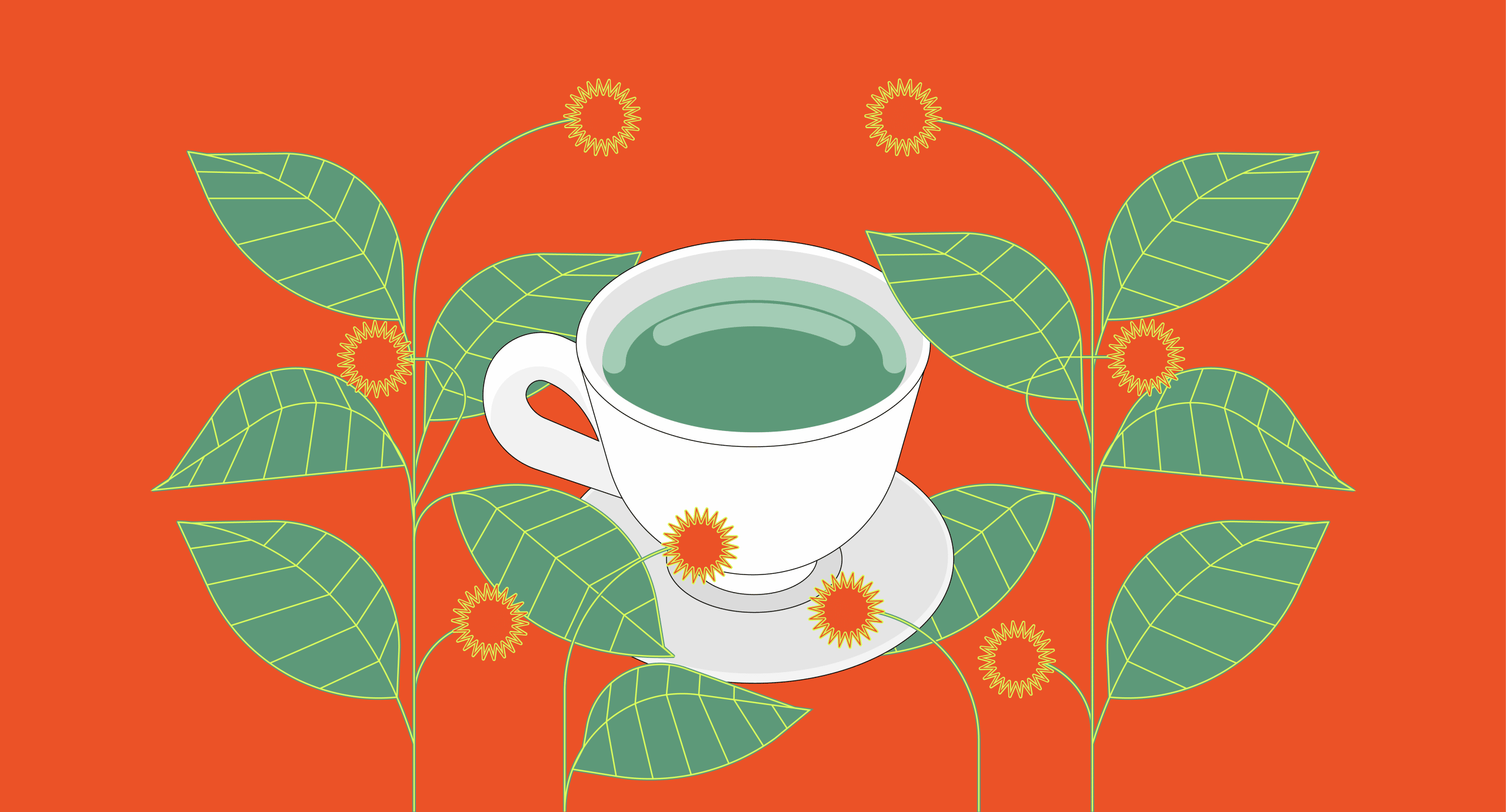We’ve all been there: you’re trying to get some work done, but your mind keeps wandering, and you can’t reign it in. Whether you’re burned out, bored, or just not in the mood to study, focusing on the task at hand isn’t always a choice.
Some people reach for coffee, stimulants, or other alternatives before studying, but these can make users jittery and anxious. If this sounds familiar, maybe it’s time to consider kratom.
What Is Kratom?
Kratom is native to Southeast Asia — specifically Indonesia, Malaysia, Thailand, and Myanmar. Though the taste is bitter, there is a long history of its use in traditional medicine for a variety of ailments.
Users consume the plant in several ways:
- Chew on its leaves
- Brew it to make tea
- Mix the powder with water or juice
- Capsules
- Extracts
- Edibles, including kratom-laced gummies and chocolate

Kratom is federally legal in the United States, but a few states and municipalities have moved to change this. Alabama, Arkansas, Indiana, Rhode Island, Vermont, and Wisconsin have all criminalized kratom for various reasons.
If you want to try kratom, you must first check if it’s legal in your state or country. With some exceptions, kratom is widely available on a global scale.
We’ll get more into dosage, where to buy it, and how to use it below.
How Does Kratom Help You Study?
Kratom sharpens attention and raises energy levels in a number of ways:
- By stimulating the main nerves and making them produce adrenaline and noradrenaline.
- By encouraging the production of acetylcholine, a neurotransmitter that regulates brain activity.
- By raising serotonin levels which in turn improves mood and lowers stress and anxiety levels.
1. Kratom Acts As a Stimulant
Kratom can be a stimulant or a sedative, depending on the strain, the dose, and the individual’s sensitivity to the substance.
Kratom’s effects come from a high alkaloid content. Alkaloids are organic compounds in some food and substances like caffeine. Throughout nature, alkaloids contain anti-inflammatory, anticancer, and pain-relieving effects, among several others [1].
Kratom leaves have over 40 alkaloids — two of which may interact with the brain’s opioid receptors. These are 7-hydroxymitragynine and mitragynine.
Studies have demonstrated that these alkaloids reduce pain and anxiety and act on the opioidergic, adrenergic, serotonergic, and dopaminergic systems [2].

Mitragynine takes up approximately 66% of the total alkaloid content in kratom and is more stimulating. In fact, research shows “mitragynine stimulus also partially generalized to cocaine stimulus” and has psychostimulant effects [3].
Strains with a higher amount of 7-hydroxymitragynine — usually red-vein strains — are more comparable to opioids and are more sedating.
Using smaller amounts allows the effects of mitragynine to shine through, though white strains are best for energy.
2. Kratom Acts As a Nootropic
Kratom may also act as a nootropic — a term for drugs that boost cognitive performance and ability — [4]. The term can indicate different things, including enhanced focus, motivation, creativity, and/or memory. While research isn’t conclusive, users report benefits like improved attention and concentration, along with stimulating creativity.
Some kratom strains — and higher doses of all strains — are more sedative and less likely to assist with memory or cognition in any way. Whether or not kratom is a nootropic depends on how consumers approach it.

Kratom Dosage for Focus & Energy
The optimum dosage for boosting energy levels is about 2 – 4 grams first thing in the morning, preferably with breakfast. Those trying out kratom for the first time should stick to 1-2 grams. Remember that the effects can take up to 30 – 45 minutes to kick in, so don’t take more until you give the initial dose time to work.
Since this also depends on body weight and other factors, a dosage calculator can help you dial in the proper dose.
Caution: Measuring kratom by volume is less accurate than weight. Use a scale.
Best Kratom Strains for Focus & Energy
It’s important to remember that the effects of kratom can vary among users; no two bodies will react identically to a particular strain or dose.
Start with the smallest possible dose and observe how your body responds before taking more.
Here are some strains we recommend for studying:

Yellow Malay
Yellow Malay provides a nice energy boost to help you feel more awake, but it isn’t overwhelming. Yellow strains are well-balanced and perfect for those who deal with anxiety.
There are a few theories on yellow kratom, but a prominent thought is that these strains are green or white kratom leaves that are processed differently. This alters the alkaloid content, making the strain less potent and mild enough for beginners while retaining its stimulating effects.
Yellow Malay is good for later in the day, especially when studying late into the night. However, ingesting it too late or in high doses could make it hard to sleep.

Red Maeng Da
In general, red kratom has a well-balanced effect on the majority of consumers. Depending on the individual, it’s not too stimulating and may even be relaxing.
Compared to other red strains, Red Maeng Da is relatively energizing. If you’re looking to reduce anxiety or pain while gaining heightened focus, Red Maeng Da could be worth a try.

Green Maeng Da
Green Maeng Da is popular for its energizing and mood-boosting effects. It provides just enough stimulation without lingering side effects like jitters or headaches.
It can be a great pick-me-up during the day and only requires a small dose to have potent effects.
Side Effects of Using Kratom
Despite having a considerably lower potential for harm and addiction than opioids, very high doses of kratom can become problematic. Additionally, it’s possible to build a dependence after excessive or regular use over several weeks or months.
There are other side effects to be aware of, though these usually happen with larger doses. Small amounts don’t tend to cause issues.
Some common side effects of kratom include:
- Changes in mood
- Constipation
- Dizziness
- Drowsiness
- Dry mouth
- Headache
- Itching
- Nausea
- The kratom wobbles
- Vomiting
Kratom’s side effects are typically mild and pass after a few hours. If you start to experience any of these, remain calm and drink plenty of fluids.
Severe side effects may also occur, especially after abusing kratom. These include:
- Addiction
- Difficulty breathing
- Heart palpitations
- Increased heart rate
- Memory problems
Kratom addiction can develop gradually over several weeks or months. Responsible use — including responsible doses and/or frequent breaks — will help avoid physical dependency on the substance.
Tolerance is a sign of dependence, so watch out for it if you ingest it regularly. The best course of action is to taper off rather than stop completely.
Do this either in terms of quantity or frequency.
Kratom vs. Caffeine
Since kratom (Mitragyna speciosa) and coffee come from the same plant family — Rubiaceae — they share many characteristics. Like caffeine, kratom can provide a boost of energy and focus when you need it. However, they also differ greatly.
In small doses, some kratom strains have stimulating effects, assisting with focus during your studies and work. Students with tight deadlines or difficult assignments often turn to caffeine to help them stay awake.

Caffeine helps boost productivity, but it usually takes large amounts to feel its effects, and crashes can make you feel worse. Moreover, caffeine use carries some risks, such as potential cardiovascular and perinatal complications. Others can’t tolerate the acidity of the beverage.
Some people combine kratom and caffeine. This combination can be safe, but it’s best to talk to your doctor first, especially if you have underlying health problems or are on medication.
Conclusion: Using Kratom to Boost Focus
Kratom has hundreds of years of history in Southeast Asia as a treatment for pain and fatigue. Used appropriately, kratom may improve focus and concentration and may be a safer alternative to synthetic substances.
Just be sure to control your dosage and start slowly, especially if you’re new to it.
- Kurek, J. (Ed.). (2019). Alkaloids: their importance in nature and human life. BoD–Books on Demand.
- Ellis, C. R., Racz, R., Kruhlak, N. L., Kim, M. T., Zakharov, A. V., Southall, N., … & Stavitskaya, L. (2020). Evaluating kratom alkaloids using PHASE. PloS one, 15(3), e0229646.
- Harun, N., Hassan, Z., Navaratnam, V., Mansor, S. M., & Shoaib, M. (2015). Discriminative stimulus properties of mitragynine (kratom) in rats. Psychopharmacology, 232, 2227-2238.
- Prevete, E., Hupli, A., Marrinan, S., Singh, D., Udine, B. D., Bersani, G., … & Corazza, O. (2021). Exploring the use of Kratom (Mitragyna speciosa) via the YouTube data tool: A novel netnographic analysis. EMERGING TRENDS IN DRUGS, ADDICTIONS, AND HEALTH, 1, 1-8.









